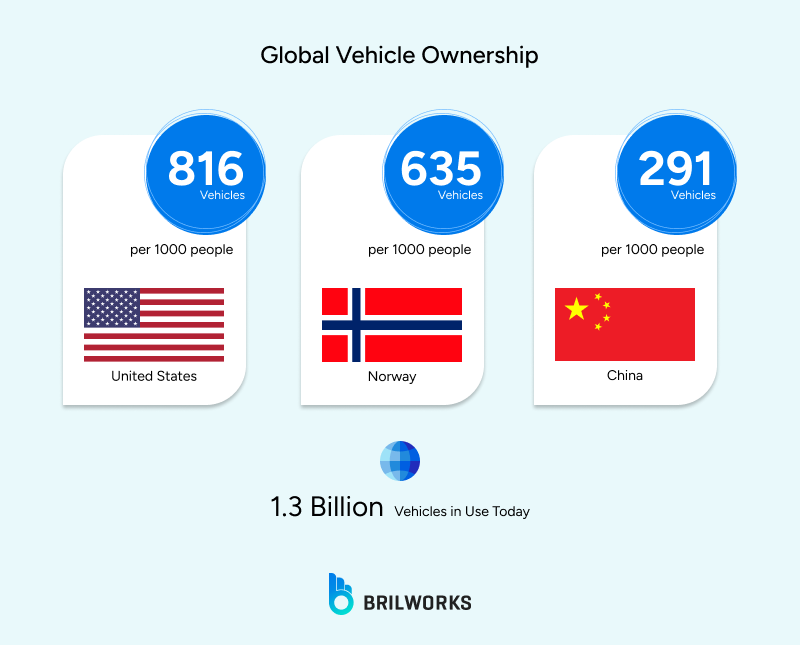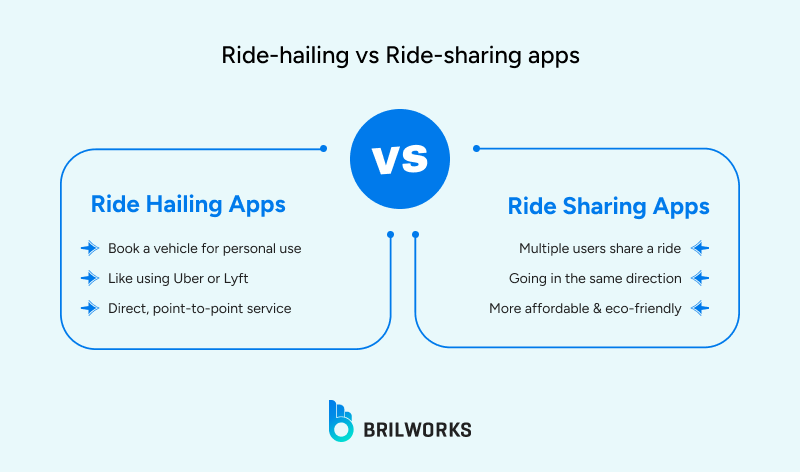COOPERATION MODEL
ARTIFICIAL INTELLIGENCE
PRODUCT ENGINEERING
DevOps & Cloud
LOW-CODE/NO-CODE DEVELOPMENT
FRONTEND DEVELOPMENT
CLOUD DEVELOPMENT
MOBILE APP DEVELOPMENT
LOW CODE/ NO CODE DEVELOPMENT
EMERGING TECHNOLOGIES








Some mobility is one of the hottest sectors right now, startups and large organizations are constantly developing new technologies to make transportation easier and more efficient. Yet, despite the innovation, the problems in this space remain widespread.
Globally, there are about 1.3 billion vehicles in use today.
To put that in perspective, there are 816 vehicles per 1,000 people in the U.S., 635 in Norway, and 291 in China. According to a McKinsey analysis, about 40% of private transport trips are already outpacing public transport. Reports indicate that in the coming decade, the mobility ecosystem will undergo major transformation, one that could significantly reduce private car ownership and increase shared mobility.
Despite all the issues, the market for mobility solutions continues to expand at an unprecedented pace. The ride-hailing market is estimated at $179.70 billion in 2025 and is expected to reach $229.98 billion by 2030, growing at a CAGR of 5.06%.
Millions of users depend daily on public and private mobility apps, from bike-sharing to ride-hailing services like Uber. The numbers tell a compelling story: app-based transactions covered 87.83% of the ride-hailing market in 2024 with a 16.71% CAGR outlook, while the US market alone is expected to see revenue rise from $59.27 billion in 2025 to $72.61 billion by 2030.
Even more striking, consumer spending reports for March 2024 indicate Uber sales were 10% higher year-on-year, while Lyft saw a 3% year-on-year increase.
While the number of solutions is growing, the core problems persist. This persistent demand-supply gap creates a massive business opportunity. Digital tools are now shaping how businesses connect with their customers. Riders, too, prefer digital convenience. They want to compare, book, and pay for rides from the comfort of their smartphones within minutes.
Building ride-hailing applications is no longer a complex dream. Many software companies now specialize in "Uber-like" app development, and the demand for these clone or white-label solutions is steadily rising. White-label Uber clone app solutions start at around $4,000, allowing businesses to launch their ride-hailing service in just a few days, compared to custom development that can cost $10,000 to $30,000 or more and take months to complete.
Just type "Uber clone app" on Google and you'll find a sea of companies ready to build one. These pre-built solutions can be launched in as little as 48 hours to two weeks, offering features like real-time GPS tracking, driver management, secure payments, and multi-platform compatibility.
Developing a ride-sharing app from scratch demands a lot of time, technical complexity, and a significant budget. That’s why white-label ride-hailing solutions have become a smart alternative. They’re cost-effective, quicker to deploy, and customizable. Before diving in, it’s important to understand the difference between ride-hailing and ride-sharing.

Whether you plan to build your app from scratch or use a white-label solution, there are essential features every mobility app must have.
A smooth sign-up process is key. The app should collect basic user data and maintain ride history. Beyond the traditional email sign-up, offering multiple sign-in options (social logins, OTP, etc.) enhances convenience.
Push notifications are crucial for user engagement. They can alert customers about ride confirmations, driver arrivals, festive deals, discounts, and more.
Real-time GPS tracking allows users to set pickup and drop-off points, monitor rides, and estimate arrival times accurately.
Include diverse payment modes — credit/debit cards, wallets, or cash — for user flexibility and driver convenience.
Features like messaging or calling help riders and drivers communicate directly for smooth coordination.

A complete ride-hailing solution must include a driver-side app with these essential components:
Profile & Registration: Collect personal, vehicle, and license details while ensuring compliance with local regulations.
Request Management: Allow drivers to accept or decline ride requests based on availability.
Trip Data: Display pickup locations, passenger details, and trip duration to help manage their schedule.
Geolocation & Routing: Real-time navigation for efficient routing.
Earnings & Payments: Enable drivers to track their daily income and completed trips easily.
The admin portal is where everything comes together. Admins can monitor rides, resolve issues, manage users, and customize platform settings. From adding support contact options to enabling new features, the admin dashboard gives full control over the entire system.
Custom app development can take 4–7 months and cost anywhere from $40,000 to $70,000 or more. That’s a heavy investment, especially for small businesses managing limited fleets.
In contrast, white-label ride-hailing apps are a cost-effective alternative.
They come pre-built with core functionalities, allow branding and design customization, and can be launched quickly. This makes them ideal for startups or small mobility operators looking to enter the market fast without breaking the bank.
The future of mobility and ride-sharing is booming, but challenges remain. Transportation systems are evolving, and the demand for digital-first experiences continues to rise. From grocery shopping to flight booking, people now prefer digital solutions that save time and offer convenience.
As life gets busier, users want seamless digital options for their travel needs. This shift is driving the entire mobility ecosystem toward smart, connected, and efficient ride solutions.

If you’re planning to build or adopt a mobility app, partnering with a logistics and mobility development company that offers pre-built white-label solutions can help you start strong. These solutions are already serving 20+ small and mid-sized businesses, helping them manage operations, track fleets, and deliver better service with full customization.
Whether for internal business use or public deployment, ride-hailing app development remains one of the most promising sectors today. The world is moving fast, and those who provide smooth, digital mobility solutions will move even faster.
Get In Touch
Contact us for your software development requirements
Get In Touch
Contact us for your software development requirements